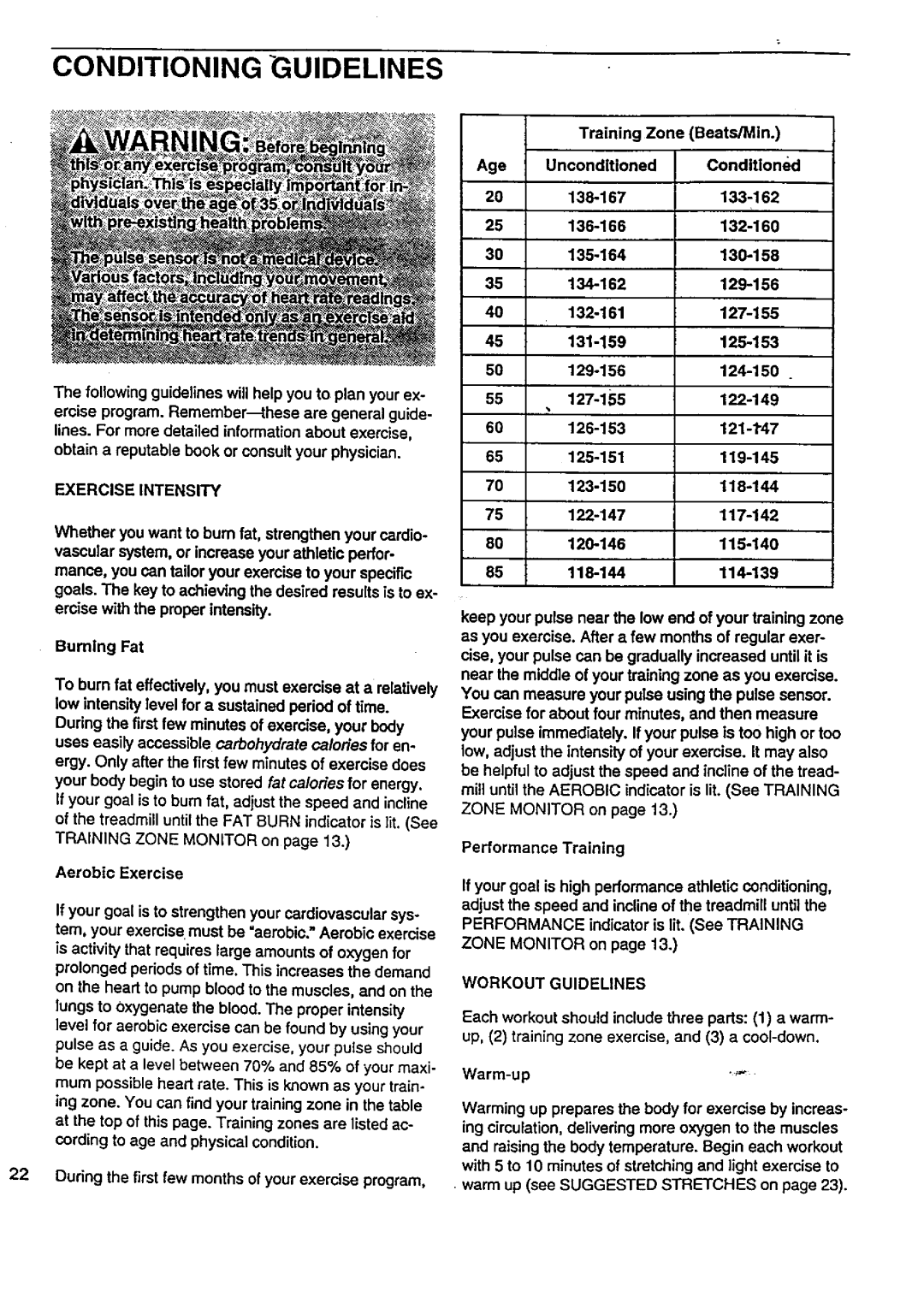
CONDITIONING GUIDELINES
The following guidelines will help you to plan your ex- ercise program. Remember_these are general guide- lines. For more detailed information about exercise, obtain a reputable book or consult your physician.
EXERCISE INTENSITY
Whether you want to bum fat, strengthen your cardio- vascular system, or increase your athletic perfor- mance, you can tailor your exercise to your specific goals. The key to achieving the desired results is to ex- emise with the proper intensity.
Burning Fat
To burn fat effectively, you must exercise at a relatively low intensity level for a sustained period of time. During the first few minutes of exercise, your body uses easily accessible carbohydrate calories for en- ergy. Only after the first few minutes of exercise does
your body begin to use stored fatcaloriesfor energy. If your goal is to bum fat, adjust the speed and incline of the treadmill until the FAT BURN indicator is lit. (See
TRAINING ZONE MONITOR on page 13.)
Aerobic Exercise
If your goal is to strengthen your cardiovascular sys- tem, your exemise must be "aerobic." Aerobic exercise
is activity that requires large amounts of oxygen for prolonged periods of time. This increases the demand on the heart to pump blood to the muscles, and on the lungs to Oxygenate the blood. The proper intensity level for aerobic exercise can be found by using your pulse as a guide. As you exercise, your pulse should be kept at a level between 70% and 85% of your maxi- mum possible heart rate. This is known as your train- ing zone. You can find your training zone in the table at the top of this page. Training zones are listed ac- cording to age and physical condition.
During the first few months of your exercise program,
| Training | Zone (Beats/Min.) |
Age | Unconditioned | Conditioned |
20 | ||
25 | ||
30 | ||
35 | ||
40 | ||
45 | ||
50 | ||
55 | ||
60 | ||
65 | ||
70 | ||
75 | ||
80 | ||
85 |
keep your pulse near the low end of your training zone as you exercise. After a few months of regular exer- cise, your pulse can be gradually increased until it is near the middle of your training zone as you exercise. You can measure your pulse using the pulse sensor. Exercise for about four minutes, and then measure your pulse immediately. If your pulse is too high or too low, adjust the intensity of your exercise. It may also be helpful to adjust the speed and incline of the tread- mill until the AEROBIC indicator is lit. (See TRAINING ZONE MONITOR on page 13.)
Performance Training
If your goal is high performance athletic conditioning, adjust the speed and incline of the treadmill until the PERFORMANCE indicator is lit. (See TRAINING ZONE MONITOR on page 13.)
WORKOUT GUIDELINES
Each workout should include three pads: (1) a warm- up, (2) training zone exercise, and (3) a
Warm-up ""_
Warming up prepares the body for exercise by increas- ing circulation, delivering more oxygen to the muscles and raising the body temperature. Begin each workout with 5 to 10 minutes of stretching and light exercise to warm up (see SUGGESTED STRETCHES on page 23).
